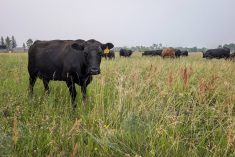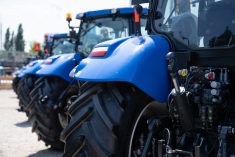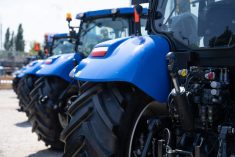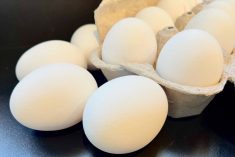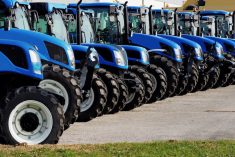The federal free trade compensation program to help Canada’s poultry and egg producers pay for on-farm upgrades, renovations and improvements is now taking applications.
The $646.8 million, 10-year Poultry and Egg On-Farm Investment Program (PEFIP) is now formally underway, Agriculture Minister Marie-Claude Bibeau announced Monday.
Each eligible Canadian producer is entitled to an amount proportional to quota holdings as of Jan. 1, 2021 and can apply “when they are ready to make an investment” between now and March 31, 2030.
Read Also

JBS profit falls amid still-challenging US market environment
JBS, the world’s largest meat company, reported a net profit fall in the third quarter in spite of a rise in global net sales amid a still-challenging beef market environment in the U.S., according to an earnings statement on Thursday.
Under the program, the government will cost-share up to 70 per cent of eligible investments, or up to 85 per cent for young producers. “Young” is defined as age 35 or younger as of Jan. 1, 2021.
Projects eligible for support include “anything that helps a producer increase efficiency or productivity, respond to consumer preferences, or improve on-farm safety, biosecurity or environmental sustainability,” the government said.
Examples include new barn construction and/or upgrades to equipment such as for feeding, watering, lighting, ventilation, heating, and comfort systems that would “promote energy efficiency and reduce an operation’s environmental footprint.”
Further examples given of projects “responding to consumer preferences” include activities to improve animal welfare, adopt alternative housing systems or transition to organic production.
Funding can also cover the hiring of consultants or other “external expertise” to “assess how the poultry and/or egg farm enterprise can improve efficiencies and productivity.”
The program will provide funding for any such “eligible activities” that started on or after March 19, 2019 and are completed no later than March 31, 2031, the government said.
Producers will be able to submit more than one PEFIP project application over the life of the program, “so long as their maximum funding amount has not been exceeded.”
The government emphasized that it’ll be each applicant’s responsibility to outline in an application how the proposed activities would “contribute to achieving one or more of the program objectives.”
In other words, the government said, PEFIP does not have a “predetermined list” of equipment eligible for funding. It also can’t rule in advance on whether a proposal will be eligible until a complete application is received and assessed.
‘Competitive’
Announced last month as part of a long-awaited compensation package against market access conceded to the Trans-Pacific Partnership (CPTPP) trade pact, PEFIP “will help Canadian poultry and egg producers be more competitive and make their facilities even more sustainable,” Bibeau said in a release.
PEFIP, as laid out last month, was budgeted for almost $630 million — but about $17.3 million originally earmarked for Turkey Farmers of Canada under the separate Market Development Program for Turkey and Chicken (MDPTC) has been reallocated to PEFIP as per “stakeholder requests,” the government said Monday. The combined 10-year funding envelope for MDPTC and PEFIP “remains unchanged.”
Sector-by-sector PEFIP allocations will now be $347.3 million for chicken producers, $76.9 million for turkey producers, $134 million for egg producers and $88.6 million for broiler hatching egg producers.
Based on quota, an “average” chicken producer will have access to up to $122,411 under PEFIP over the life of the program, while an average turkey producer can seek up to $147,356; an average egg producer, $111,203; and an average hatching egg producer, $375,297.
To be eligible, producers must either be holding quota, hold loaned quota and/or whole-farm leases with loaned quota, be “licensed, or equivalent, by a provincial marketing agency,” or be part of Atlantic Canada Hatching Egg Producers.
Other poultry and egg producers, as well as any educational and/or academic institutions holding quota, are not eligible.
The affected feather groups last month hailed the new programs not only for their direct support of farmers but also for “generat(ing) economic activity and investments in rural and urban communities across Canada at a time where our small businesses are hurting, and our local economies need it the most.”
The federal government reiterated Monday it “remains committed to engaging” the feather sectors on “full and fair” compensation for market access conceded to imports under the Canada-U.S.-Mexico Agreement (CUSMA). — Glacier FarmMedia Network






